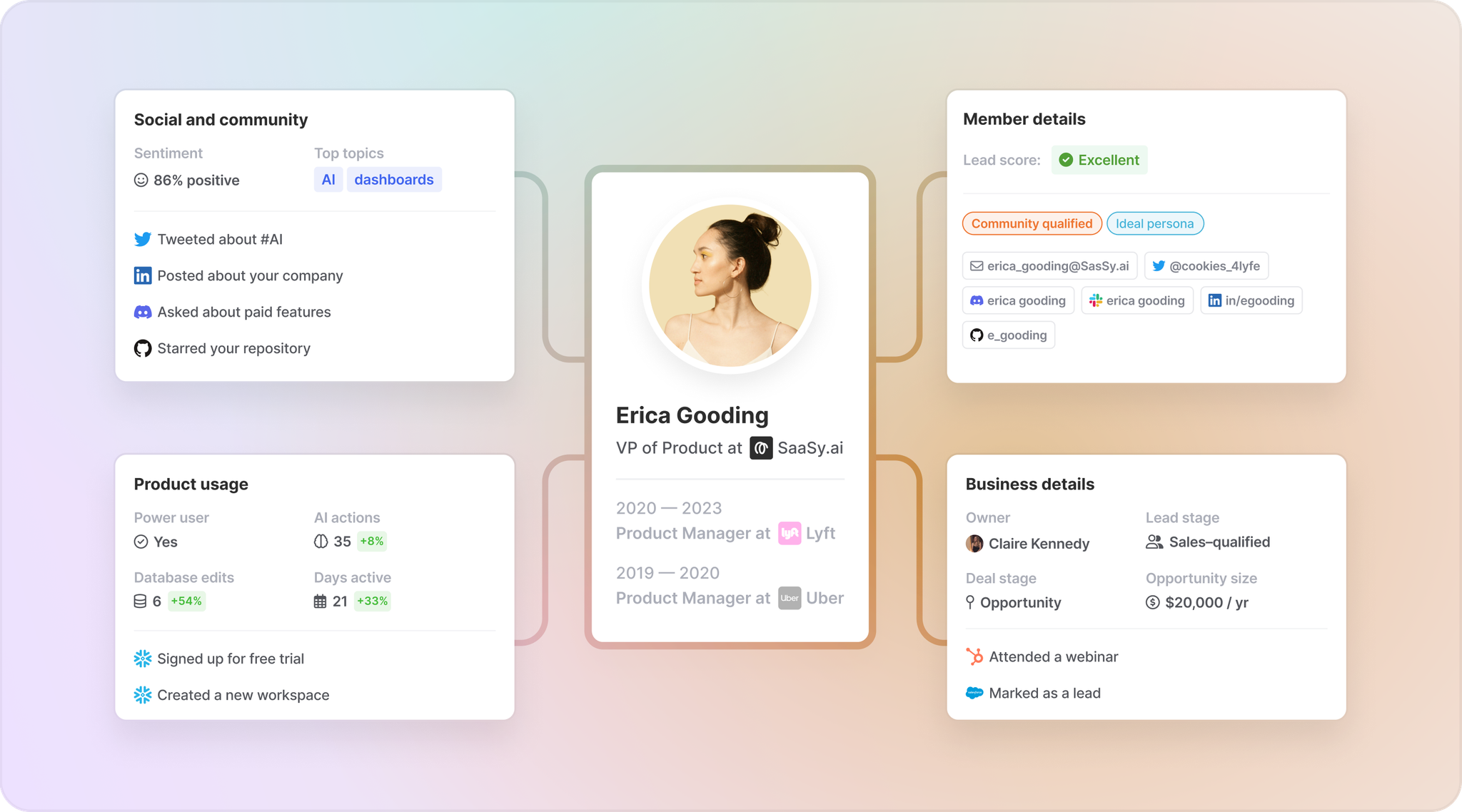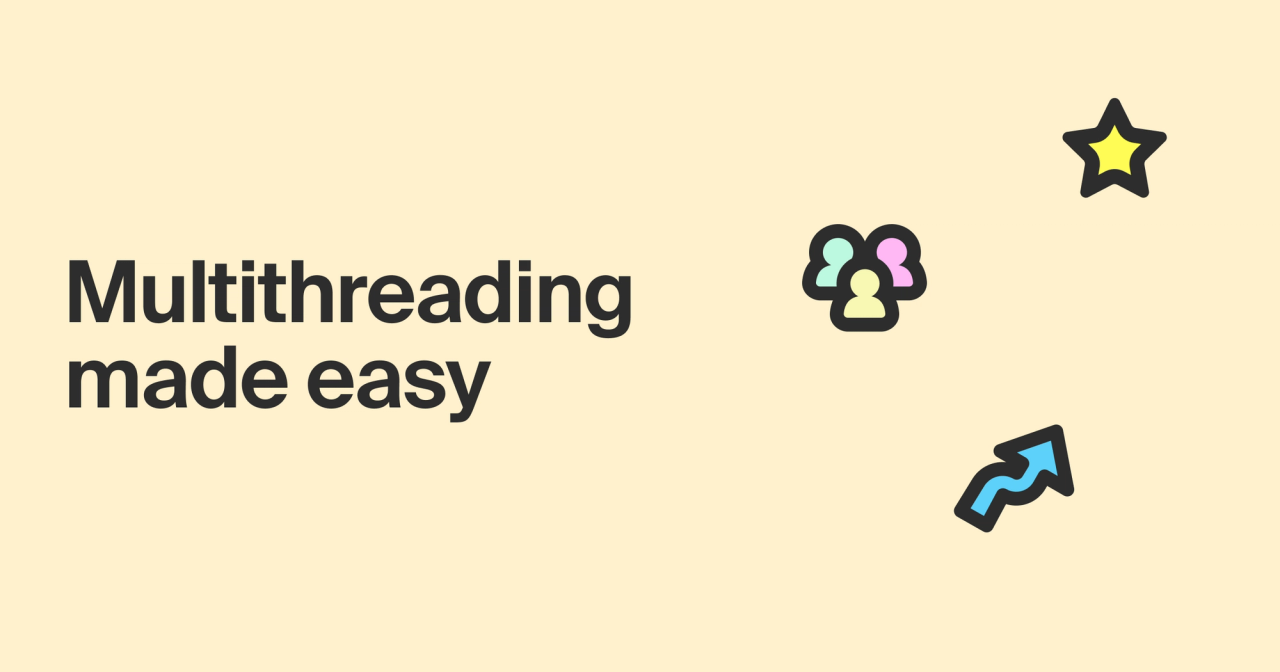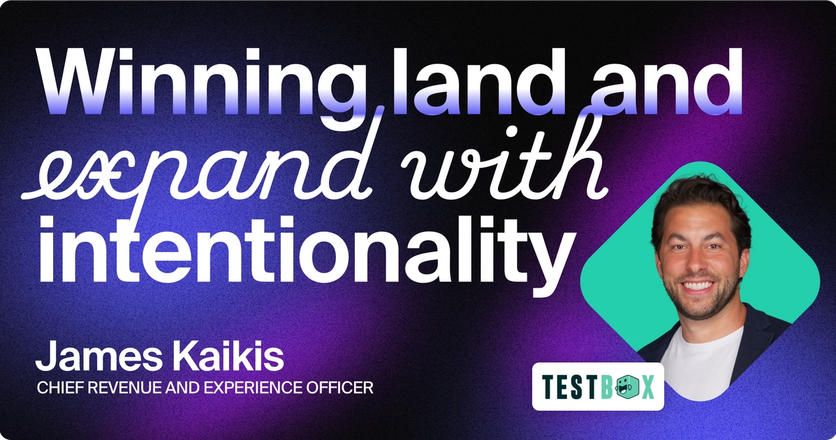The only thing better than one buyer champion is two (or three…or four…you get the idea).
Multithreading—that is, building relationships with multiple stakeholders on the buyer’s side—is an excellent way to increase the odds of conversion and close deals faster.
But stacking the odds in your favor isn’t always easy. If it was, everybody would be a multithreading maestro.
Keep reading to learn:
- Why it pays to get multithreaded
- What reps should do to uplevel their multithreading
- How to take the guesswork out of your multithreading strategy
Why multithreading matters
Sometimes deals get stuck.
Stakeholders require extra handholding. Managers push back on purchasing new software (especially in today’s consolidation climate). People change jobs (or simply ghost you).
There are a million reasons why a deal might go from promising to precarious—especially when large buying committees evaluate every deal with a fine-toothed comb.
The average B2B buying decision now includes 11 or more people, and that number can shoot through the roof if the deal is particularly complex.
Multithreading allows you to build momentum in a deal and get it across the finish line faster by removing roadblocks from the get-go.
Top-performing sales reps (the ones who hit 150% of their quota or more) are 13% more likely to get multithreaded.
But that doesn’t mean you should start blasting off emails to every person with a @targetcompany.com email domain.
Multithreading won’t work (and may even backfire) if you don’t go in with a game plan.
Multithreading dos and don’ts
Here are three dos and don’ts to keep in mind next time you get multithreaded:
Do: Pick your point of contact’s brain
Warm intros are better than cold ones.
Talk to your main point of contact. Find out who else you need to speak with. Then ask your POC to introduce you. Knowing what the internal decision-making process looks like—who holds budget authority, which stakeholders are absolute must-haves—will help you hit the ground running.
But don’t expect your buyer to do all the legwork. You know which teams get the most value from your product (and which teams usually need a little convincing). Help your POC narrow the field based on your own research and experience.
Do: Speak your buyer’s language
The person you’re selling today isn’t the person you’re selling tomorrow.
Personalize your messaging based on what matters most to the person you’re talking to. Take their job title and business function into account. Try to articulate value in a way that will resonate.
End users care more about functionality and day-to-day workflows. Execs are much more concerned with ROI and risk. Different teams have different priorities. Tailor your outreach accordingly.
Do: Build up your defenses
Some decision-makers are tougher than others. It helps to find and nurture your champions first.
Is your main POC fully on board? Equip them with the materials they need to roll out the red carpet. Did a former product champion switch jobs and land at your current account? Get in touch and see if they’ll help spread the good word.
The order in which you multithread matters. Start by building a strong foundation of internal advocates. Ultimately, you need to convince the people who will sign on the dotted line, but input from friendly team members can go a long way.
Don’t: Reach out willy-nilly
Too much input from too many people can slow down a deal. And input from the wrong people can kill it.
Talk to your POC, study your closed-won successes, and determine which combination of stakeholders makes the most sense.
The goal is to pull in only the people you need. Avoid complicating conversations with random (and unnecessary) acts of multithreading.
Don’t: Take an all-at-once approach
You can’t sell to multiple people on a group email chain. At least not well.
Best-case scenario: Half the people you’re trying to win over ignore you. More likely scenario: The deal gets muddled before it even leaves the gate.
Treat each person you’re trying to multithread like what they are: individuals with specific wants and needs. Single-threading multiple people beats a one-to-many strategy any day.
Don’t: Go in blind
Job titles can tell you a lot, but they won’t tell you everything.
Dig deep into different stakeholders. Get a look at what they’re saying and doing across your digital ecosystem. Then personalize your approach based on the info you uncover.
Your job is to get to the meat of what matters for different buyers. Surface-level firmographics are just a starting point.
How to multithread better using Common Room
Common Room makes it easy to untangle your multithreading.
AI-powered identity resolution and enrichment gives reps full visibility into every account and the people behind it—including their job titles, contact information, and recent cross-channel activities.
Dozens of integrations with popular data sources—from social media channels to community forums to your own product—make spotting multithreading opportunities a breeze. Ditto for researching different stakeholders.

Reps can create dedicated segments for different deals, automatically populate them with every individual associated with an account, and easily double-click into different stakeholders for research or outreach.
Real-time alerts help reps keep tabs on buyer activities across channels so they can always reach out at the right time and in the right place.

And with easy-to-use filters and tags, reps can slice and dice accounts to zero in on the right people with the right message, from deal influencers to decision-makers.
Reps can sort individuals based on any firmographic dimension they want and automatically tag them as product champions, economic buyers, and more using customizable criteria.

Multithreading isn’t about banging on random doors. It’s a delicate dance that requires careful planning and precise execution.
Make sure you have the tools you need to follow the steps.
Multithread accounts faster and easier with Common Room
Ready to see how Common Room helps you uncover every angle of your open accounts?


